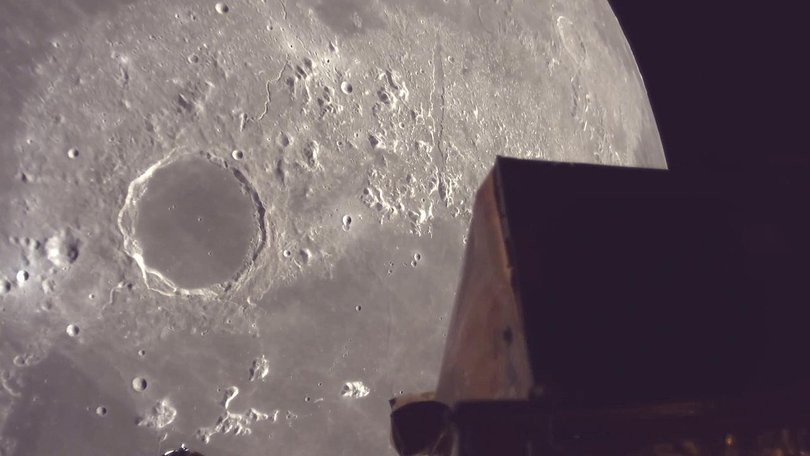Japan’s lunar lander to target moons unexplored north, carrying a tiny red house

A private lunar lander from Japan is closing in on the moon’s unexplored far north, carrying an unusual piece of cargo - a miniature red house.
The moon landing attempt by Tokyo-based company ispace on Friday, Japan time, is the latest entry in the rapidly expanding commercial lunar rush.
The encore comes two years after the company’s first moonshot ended in a crash landing, giving rise to the name Resilience for its successor lander.
Sign up to The Nightly's newsletters.
Get the first look at the digital newspaper, curated daily stories and breaking headlines delivered to your inbox.
By continuing you agree to our Terms and Privacy Policy.Resilience holds a rover with a shovel to gather lunar dirt as well as a Swedish artist’s toy-size red house that will be lowered onto the moon’s dusty surface.
Long the province of governments, the moon became a target of private outfits in 2019, with more flops than wins along the way.
Launched in January from Florida on a long, roundabout journey, Resilience entered lunar orbit last month. It shared a SpaceX ride with Firefly Aerospace’s Blue Ghost, which reached the moon faster and became the first private entity to successfully land there in March.
Another US company, Intuitive Machines, arrived on the moon a few days after Firefly. But the tall, spindly lander face-planted in a crater near the moon’s south pole and was declared dead within hours.
Resilience is targeting the top of the moon, a less forbidding place than the shadowy bottom.
The ispace team chose a flat area with few boulders in Mare Frigoris or Sea of Cold, a long and narrow region full of craters and ancient lava flows that stretches across the near side’s northern tier.
Once settled with power and communication flowing, the 2.3 metre Resilience will lower the piggybacking rover onto the lunar surface.
Made of carbon fibre-reinforced plastic with four wheels, ispace’s European-built rover — named Tenacious — sports a high-definition camera to scout out the area and a shovel to scoop up some lunar dirt for NASA.
It also holds a tiny, Swedish-style red cottage with white trim and a green door, dubbed the Moonhouse by creator Mikael Genberg, for placement on the lunar surface.
Takeshi Hakamada, CEO and founder of ispace, considers the latest moonshot “merely a stepping stone,” with its next, much bigger lander launching by 2027 with NASA involvement, and even more to follow.
Two other US companies are aiming for moon landings by year’s end: Jeff Bezos’ Blue Origin and Astrobotic Technology. Astrobotic’s first lunar lander missed the moon altogether in 2024 and came crashing back through Earth’s atmosphere.
For decades, governments competed to get to the moon. Only five countries have pulled off successful robotic lunar landings: Russia, the US, China, India and Japan.
Of those, only the US has landed people on the moon: 12 NASA astronauts from 1969 through to 1972.
NASA expects to send four astronauts around the moon next year.
That would be followed a year or more later by the first lunar landing by a crew in more than half a century, with SpaceX’s Starship providing the lift from lunar orbit all the way down to the surface.
China also has moon landing plans for its own astronauts by 2030.
